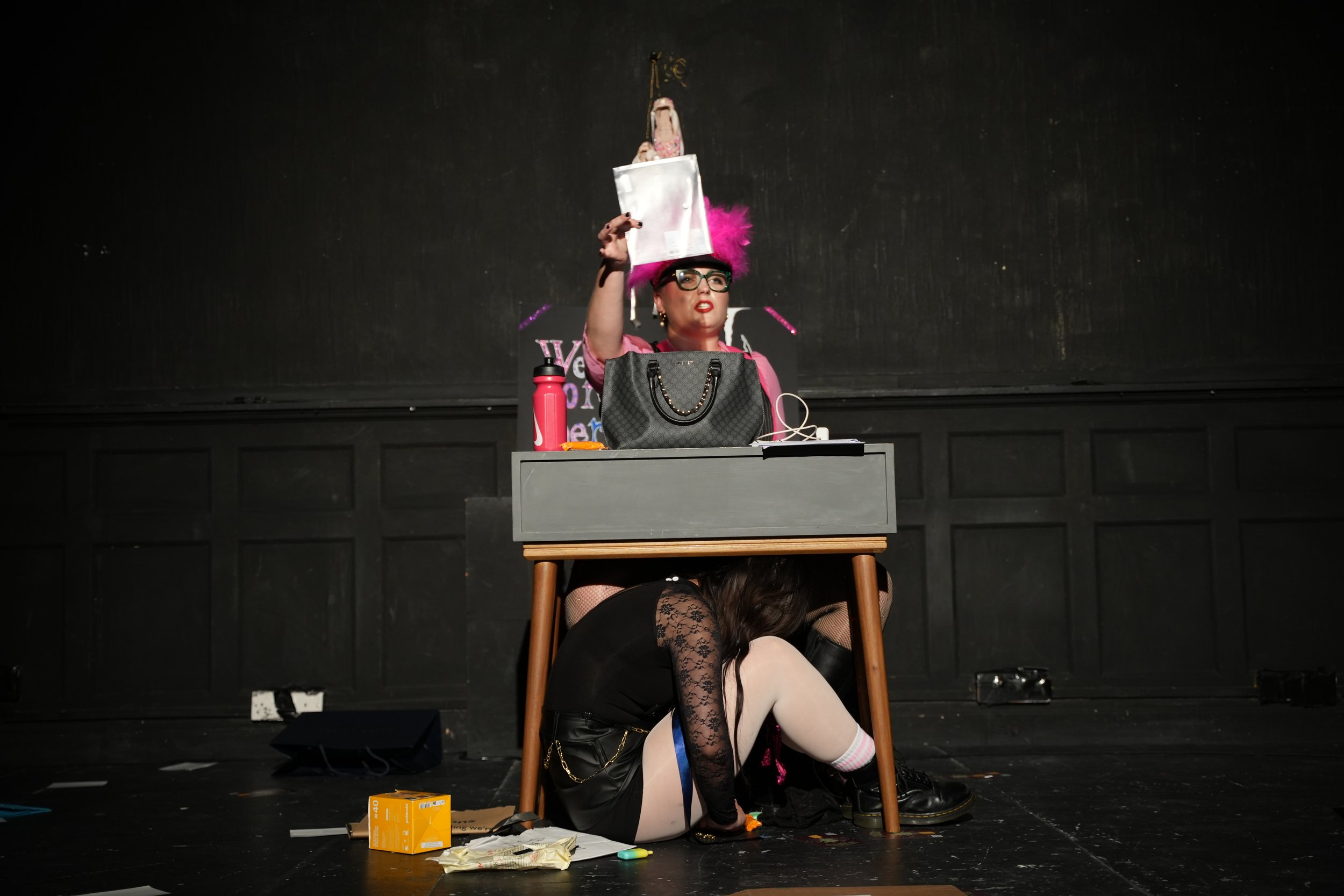
ABUNDANCE
What is it about?
What’s In The Bag? Another bag and … SPLASH! What is the tension between overflowing and prosperity?
ABUNDANCE is a durational performance presenting research into creating the aesthetics of abundance. Why in Western culture do we feel the need to collect when we are drowning in packaging? Is the Louis Vuitton bag real? ABUNDANCE is FULL of paradoxes. Fake vs Real. Full vs Empty. Production Line vs Ecosystem. Featuring the rejection of neutrality and the acceptance of being abundantly TOO MUCH! Everything must be reused. Household items become props and new props become household items.
ABUNDANCE premiered at Golden Goose Theatre on 11th May 2024. Duration: 5 hours. Created and performed by Et al. Performance.
How did the show come about?
ABUNDANCE originated as part of the sustained independent project of Gabriella Curtis for MFA Advanced Theatre Practice at Royal Central School of Speech and Drama. She made the show with comedian Greg Harding and fellow Et al. company members, Lara van Huyssteen and Belle Thurston. The aim of Gabriella’s project was to research abundance in Western society through scenography and performer practices with a focus on ‘too much’, performing useless tasks and community.
Key references and inspiration
Key references included decay and decadence as discussed by Adam Alston in his book Staging Decadence, Lars Svendsen’s Philosophy of Fashion and Elizabeth Freeman’s theory of chrononormativity. Through studio practice the company interrogated how abundance cannot exist without scarcity. This key theme fed into the creative process and allowed the company to work with a clear performance aim wherein they would continuously create and decay onstage, reflecting how life and nature goes through peaks and troughs.
The key inspirations for the company were Vogue’s In the Bag series, online shopping culture, and the trope of the ring girl. Through improvisations with various kind of bags and what they contain, the company explored the ideas of ‘too much’, uselessness, need vs desire and real vs fake examined through a consumerist lens. The company saved all their shopping bags over eight months, and presented this accumulation of bags onstage. They did this in the opening scene which sees a doorbell constantly ringing, cueing packages filled with trash to arrive until the stage is overflowing with waste. This created an image that commented on online shopping culture, the state of the streets of London, and the climate crisis. The performers appeared as ring girls; alter ego versions of themselves that celebrate being ‘too much’ and reinforce the stage as a container of an event. The performers facilitated the event as opposed to being the subject of the event, restructuring the hierarchy of the stage elements that sees the performer sharing their podium with apparatus, stage design and sound. The scenes of the performance were a series of useless tasks to be performed by the ring girls, and made space for the audience to interrupt the performance by inviting them to request a coffee or to take a polaroid photo with the cast at any point during the show. This granted the audience agency in the performance and cultivated a sense of community between them and the performers. The performance did not have a definite ending and simply stopped when the clock ran out at 5pm, indicated with the pop of a confetti canon and houselights coming on.
Dramaturgical Frame
The ring girl was the key dramaturgical frame for the performance. The trope of the ring girl represents a woman cheerleading for a man participating in a competition; an event wherein someone must lose for the other to win. Scarcity must be tolerated in order for abundance to come into existence. In relation to the performance ABUNDANCE, the ring girl represents the bystander mentality of the consumer when we disrupt nature i.e. polluting the planet. destroying ecosystems and making species go extinct. Humans tolerate scarcity in nature for humans to achieve abundance. The individual resists accepting personal responsibility as it feels impossible to make a significant positive contribution on an overpopulated planet. Therefore, the performance playfully employs recognisable gender politics to make a comment on the consumer’s impact on the climate crisis.


























